|
It was during an NBC Must See TV commercial break in the autumn of 1998 when I first saw the Jeff Goldblum iMac ad. I looked up from my Packard Bell in mid-dial up connection to the America Online server and saw the dazzling Bondi blue monitor. I was smitten. As soon as my modem’s successful completion of crrrrrrrshes and pong-bings united the imitation Keith Haring figure with their on-line buddies, I could bypass the AOL mainframe to open an Internet Explorer browser and go to http:// whatever the apple store address was in 1998 dot com. I pulled up the product page to find the price tag exceeded my dinky credit card limit at the time and financing was not an option for impulsive 19-year-olds. I was gutted. Then I was distracted by NBC’s lineup of neurotics in vests gesticulating around NYC. I yearned for the colourful iMac for years but settled for accessing my favourite usenet groups and message boards on a series of cheap eMachines—which eventually totalled up to the cost of one iMac. I didn’t grow up as a computer kid. I was a television kid. We didn’t need to compute things in my household as much as we needed to follow our televised serial broadcasts. If we had to type something, we sat down at the electric typewriter. If I wanted to play video games, my mother might let me go to the mall arcade. Computers were for business people or nerds. The closest thing we had to a computer was my Talking Computron toy from Sears. He was hi-tech Speak ’n’ Spell with a robotic Orson Welles timbre and a red LED screen that displayed words and numbers in the rudimentary digital font. Computron was loaded with a dozen or so educational games and with 6 “C” batteries, he would prompt me to “please choose an activity” and teach me multiplication, spelling, and the pronunciations of words like “biscuit,” “zebra,” and “handbag.” There were computers at the county courthouse where my mother worked on her real estate reports, and where I would sit quietly most days after school. Those machines were limited in their offerings to retrieving mortgage and tax information about local properties and property owners. The only game to play was plugging in the surnames of classmates to find out how many mortgages had been taken out on their parents’ houses. I learned about legit computers during one six-week term in first or second grade, when our class was marched along the breezeway out to the portable trailer that housed the computer lab. They must’ve taught us something worthwhile about computer commands and functions on the Apple ][e, but all I can recall is playing Word Munchers and trying to beat my classroom nemesis’ score. The goal of Word Munchers was to chomp up words with rhyming vowel sounds before getting chomped up by monster Troggles wandering onto the game board. Computron proved to be somewhat unreliable in preparing me for Word Munchers victory, but I managed to top the scoreboard a few times. When we determined it was best—and certainly quieter and less messy—for me to identify as a Burgeoning Writer, my mother went to Sears and got me the Brother Writer Series word processor with built-in daisy wheel typewriter printer and MS-DOS compatible 3.5" disk drive. The keyboard folded up over the narrow screen and the one-piece unit was outfitted with a pull-out handle and a notch where the power cord could be wrapped and stowed, creating an illusion that the unwieldy beast could be considered portable. It sat on my desk for several years as I typed up derivative sketches about a 94-year-old woman and trite little articles for the high school newspaper. I would pretend I was the future Erma Bombeck as the chartreuse display illuminated my pudgy face in my darkened bedroom while I stayed up into the wee hours playing the monochrome version of Tetris that came preloaded on machine. I wrote pedestrian critiques of light entertainment for the school paper long enough to get promoted to Editor. Being Editor meant consulting with the faculty advisor over which trite articles to print and then working for several weeks arranging the text around ads for churches and auto parts stores using Aldus Pagemaker on the school’s Macintosh IIx computer. Every term, I delivered the laser printed multi-page document to Lazer Copy to be mass printed by the hundreds. The staff spent a day half-heartedly peddling the paper for a quarter to students too immersed in their up-to-the-minute homeroom gossip sessions to mind about the recorded accountings of prior events. The fruits of our labour then chucked out by the hundreds, a few posterity copies shuffled off to the school library’s storage room with the rest of the great unread. Because I only had my basic word processor at home, I skipped out on many hours of classes my senior year to push pixels around on that small square screen, determined to become more proficient at computering while desperately trying to make the publication look less like the cheesy newsletter with no journalistic aspiration beyond “folks like to see their name in print” that it actually was. Despite my best intentions, The Lion’s Roar came out like more of a kitten’s yawn, but at least it inspired me to… be… something. Then my life was ruined because of a boy. No. Let’s be fair to the boy—he could not know when he introduced me to the local dial-up BBS where he played text-based MORPGs and chatted with fellow nerds that it would unleash my inner insatiable data-consuming monster tormented by curiosity over content that was only accessible by modem. It wasn’t enough for me to watch over his shoulder while he saved text documents filled with lame dad jokes and used up his daily turns battling forest monsters in Legend of the Red Dragon. I needed to log on for myself and share obscure pop culture quotes using special characters and blinking text. So, back at Sears, I got a Brother Ensemble “personal color desktop publisher” with an external MO-700 data modem and built-in inkjet printer. In addition to dialling in to the monospaced social network, I could finally format my dreadful poetry and essays in other fonts and colours and create homemade cards and newsletters with garish clip art. That should’ve been enough to keep me occupied. The trouble was, the BBS connection tricked me into thinking I could have an audience for what I was passing off as cleverness in the mid-1990s. Who needs a newspaper humour column when the virtual message board is a squealing ping-bong away? So, did I impress strangers with breezy, pithy wordplay? Or did I resort to posting moody status updates and bitter song lyrics in my user profile as the relationship with the boy soured? Log off, you silly child! My desktop publisher was soon replaced with a Packard Bell Multimedia computer running Windows 95. I’d naturally assumed I’d own an Apple computer. Macs were for creatives; PCs were for business and nerds. Was the universe trying to tell me I wasn't creative or did they just not sell Macintosh computers at Sears? Whatever the case, I needed to investigate the world wide web and electronic mail and this would have to do. The BBS boy was long gone and I had no use for mediaeval door games, but was already chasing attention from strangers surfing the ’net for my brand of curmudgeonly observations and ill-informed musings. Oh, but if I could’ve just sat contentedly listening to the WAVs from the Monty Python's Complete Waste of Time CD-ROMs. Why wasn’t that enough? Why did I have to hitch a ride on this information superhighway? Me an’ Packy B spent countless hours—or whatever is 500 hours multiplied by the number of America Online CDs haphazardly stacked on my desk—perusing GeoCities web-sites and searching for half-remembered nostalgias from childhood on Yahoo. I lurked in newsgroups, A/S/L’d in chat rooms, ghosted IMs looking to cyber, and figuratively ROLF’d on AIM with users in my Buddy List. AOL had an assortment of general “channels” like Health and Entertainment and Sports to direct n00bs to content of interest, and within those channels were articles and chat rooms and message boards, some of which could be accessed directly via customized keywords. The Amazing Instant Novelist (keyword: NOVEL) was a community for hopeful writers to share their poems and short stories for generous feedback on message boards monitored by moderators who were also aspiring writers. Somehow I was entrusted with an official NOVL handle and assigned to moderate some of their message boards, making sure the prose complied with the TOS. I was logging in for a shift when I saw that first iMac commercial. Four years elapsed between my clapping eyes on the computer of my dreams and settling for the next best thing in an eBay auction. I connected with an I.T. guy whose interests in LAN parties and MORPGs involved constant fiddling with PC guts. That meant mucking about with my own computer’s insides, tinkering with sound cards and logic boards, upgrading RAM, and adding new drives. Tons of tiny screws getting lost in the carpet and making disturbing tinkety-clanks as they passed through an unsuspecting vacuum cleaner. As fascinating as it was to sneak a peek into the nerdy world of computer gaming and marvelling at the limitless customization possibilities of tower cases, the whole thing wasn’t really my scene and I could not dig it. I ditched the monstrosity and started over with a fresh ’puter—which I still wound up cracking into and poking around with much frustration and little reward. Convinced I learned my lesson, I was seduced by the budget-friendly eMachine and its “never obsolete” pledge—an appealing lie with a built-in DVD drive. I’d gone through as many computers as there were seasons of NewsRadio in roughly as many years. Was I doomed to a lifetime of replacing my computer on a near-annual basis? Was the universe telling me to go back to word processors or just to log off completely? Perhaps I would’ve heeded the universe’s message had seeing Rory Gilmore’s iBook not reawakened my dormant desire, albeit slightly altered. I logged on to eBay and started bidding on my indigo blue clamshell iBook G3/300. The change of operating systems would determine whether I was serial computer killer and should embrace the life of a Luddite. When the iBook arrived several weeks later, I was elated. Finally, I could access email the way Jeff Goldblum intended. This was not, of course, the Apple of Word Munchers yore or Macintosh of publishing past. The flat yet friendly interface to which I was accustomed was replaced with the slick Mac OS X, so hip at the time with its glossy Aqua user interface and boingy dock icons. The smooth rounded corners and dimensional graphics were far more aesthetic than the clunky, staid Windows GUI. The trade off for cool computing was its complete incompatibility with every piece of software I had running on Windows. However, I felt immensely relieved there wasn’t much one could customize; only the RAM and Airport card slots were easily accessible directly underneath the removable keyboard. Everything else was neatly arranged and secured within the lap part of the laptop. Expert repair guides show complex teardowns for the computer, showing the exact order the pieces must be removed and good luck fitting it all back in, amateur. The hard drive had been upgraded prior to my purchase, unofficially, by someone with a Torx screwdriver brave enough to lefty-loosey the 6-star screws and maneuver through the circuitry. I decided to leave well enough alone, content to once again coexist with the technology as it was presented to me. It was curtains for my Windows machine—almost. I told myself I had to keep the PC desktop for graphic design, a hobby I stubbornly persisted in simply because I had the Windows version of industry standard software. Meanwhile, I did my work as a Proper Freelance Writer on my iBook. It felt right—the heft of the 6.7 pound laptop heating my thighs as I wrote long into the night about advertising and technology and cocktails, idly bouncing my fingers atop the flat white keys of the sproingy keyboard and fiddling with the keyboard release tabs while in deep thought about technosexuals and tropical analgesics. I cursed my coordination while navigating between apps using the trackpad and trying to align the pointer precisely to click on my selections. Predating the proliferation of downloadable apps and games, my iBook was sparsely loaded with software. No immersive games to tax the RAM and waste the day. Although, it could connect to the Internet via the internal modem and ethernet. Useful for researching topics and wasting precious hours on deadline looking at snarky weblogs devoted to television recaps and bizarre 20th century commercial art. I crammed the bulky clamshell laptop into my enormously dorky padded laptop backpack and hauled it with me on travels, desperately hoping the hotels had reliable Internet access via ethernet to check email for incoming assignments while on the road and get my fix of web comics, mutuals on my blogrolls and LiveJournal, and early forms of memes. At least I didn’t need to rack up long distance charges dialling into the old BBS.
The iBook was the snowball that started my personal Macintosh avalanche. Over the next twenty years, I accumulated an iPod shuffle, iPod Touches, iPads, a couple of iMacs, and an iPhone. My iBook fell into disuse circa 2007, when I had a greater need to do more *~∞~*graphic design*~∞~* and my boyfriend passed along his Power Mac G4 Quicksilver when he upgraded to his first iMac. I still took the iBook on trips and intended to use it for writing, but it was already creeping towards obsolescence, unable to upgrade the OS X beyond v.10.3.9—codename Panther—and its battery barely able to hold a charge. Here in the early-mid 21st century, the iBook is almost entirely irrelevant. No webcam or microphone, no wireless Internet capability, no Bluetooth—booting it up feels like a sort of time travel. In fact, every time I start up the machine, a warning message pops up to tell me applications and files may not behave properly because its time and date is forever stuck at 7:01 PM on a Wednesday some time before March 24, 2001. As the iBook shows physical signs of age—the plastic casing shows minor cracks, the CD-ROM bezel has fallen off and refuses to be reattached, the power cord roughened in spots from tiny kitty teeth—the urge bubbles up to tinker and mend. Replacement parts are difficult to come by. I suspect the kids working the Genius bar would be flummoxed to see such a relic in motion. So, I’ll apply another layer of double-sided tape to the bezel and hope it holds and transfer data with a barely compatible USB thumb drive. It’s still a fine little piece of technology. And at least it feels possible to repair. These new devices with their impossible to open cases and irreplaceable parts are a bane to those of a type who like to poke around inside their electronics. How nice it would be to replace a battery or add more memory to a doddering iPad? Or to be able to make a minor upgrade to an existing device so it can keep up with the iOS demands instead of buying a new one and chucking the old one in the household landfill drawer. The current system is not sustainable, coercing consumers to upgrade before its fiscally feasible because of obsolescence via software and the spooky waggling fingers warning of “this device will no longer be supported” for security purposes Some things should be easily addressed by the consumer instead of the slightest glitch triggering a panicked dash to the mall like a parent with their sneezing newborn. The steady march of progress is a full sprint, to no foreseeable end. Maybe the end leads back to the beginning, small communities dusting off their mammoth desktop machines and dial-up modems to connect on local BBSes. Perhaps there’s a return to monospace displays where old folk can double-space after a period to the ghost of their typing teacher’s heart’s content. Or the rest of us will leave computing to the business nerds and breathe new life into printed ’zines and alternative weekly newspapers and chain letters sent through the post. Miles of fibre optic cables forgotten, left to disintegrate as metaphorical grass sprouts through the crumbling infrastructure of the poorly maintained information superhighway, which we’ll discover was just a tech magnate’s desire path loosely paved with America Online CD-ROMs. Instead of isolated influencers gabbing into selfie lenses, the attention-seekers unite at the public access television station. A new generation of neurotic middle-aged people discover their love of sweater vests.
0 Comments
Ah, summertime! For kids giddily tearing out of school buildings as the chorus from Alice Cooper’s “School’s Out” blared out of car windows from FM radio on the last day of classes, summer meant 10–12 weeks of blissful freedom. For single working mothers with school-age children, it meant scrambling to find affordable childcare options for those potentially supervision-less weeks. As a child of a single working mother, my grade school summer vacations were spent in the most educational places a kid could be outside of summer school. Early on, I cozied up to my grandmother's 10-inch black-and-white TV with the syndicated sitcoms and game shows of the day in between shelling butter beans and going across the street to the Big Bear grocery store with Grandmother so she could get her a fresh six-pack of Pabst Blue Ribbon. The next couple of summers put me at for-profit daycares that constantly challenged my parental-guided risk analysis through mandated outdoor activities. As I got older and forged my brand as a well-behaved Quiet Child, I could sit quietly at my mother’s workplace or the public library reading my way through the Book It challenge for a free personal pan pizza. At some point, I determined that I was desperate to be creative and longing to discover a talent to justify the creative impulses. I was already writing short stories, dabbling in social commentary and mature subject matter like depression and teen pregnancy and marital infidelity. Where did I learn about such things, wondered the very people who kept the family television tuned to daytime and nighttime soap operas. Writing, though it was a quiet pursuit, and one that could be done using free office supplies, did not fully sate my creative urges. I made cassette tapes as a terrible radio DJ. I wove useless square potholders from nylon loops on a plastic loom until too many pegs snapped from the tension. I dabbled in light defacement of the apartment walls with pencils and crayons, to the chagrin of the single working mother desperate for her security deposit to be returned. I wanted piano lessons, but all I got was a small blue Casio keyboard to practice snippets of pop songs from the radio. For a couple of years, I was enrolled at Miss Tammy’s Academy of Dance, which was less a prestigious academy and more a small weathered studio behind a gas station off the main drag. We’d hoped that the rigorous schedule of jazz, ballet, tap, and gymnastics would make a more graceful couch potato of me. After two years of little miss thunder thighs here missing cues and not being able to manage even a half-assed cartwheel, my inner creative monster started to wonder if her place might not be in the performing arts. In the age of Dirty Dancing, this was one Baby who could be put in a corner. My mother felt that my last preteen summer needed to be filled with some activity, but I hotly dissented. I’d voraciously consumed The Baby-Sitters Club series to date and was wholly convinced that if 13-year-olds in Connecticut could be trusted to babysit actual tiny babies for money, I could spend my summers at home alone with our old 19” Curtis Mathes television and basic cable instead of being placed in the so-called care of so-called responsible adults. I wound up joining a casual friend—the daughter of one of my mother’s work colleagues, another single working mother—at a ceramics class at the Capitol Heights Community Center. I don’t think the girl and I were so much friends as children of the same age who weren’t overtly evil or malicious towards each other…which I suppose is akin to BFFship for preteen girls. We weren’t about to start a child-minding business together in any case. The ceramics class was an odd choice, as I’d been mostly discouraged from having messy creative hobbies. I was never permitted to have finger paints or Play-Doh at home. I could use the Paint with Water colouring books so long as I was very careful with the small cup of water. But it was okay, maybe, for me to make a mess in a pottery studio, where cleaning up was somebody else’s problem. And maybe my inner creative monster would be able to dismiss another potential talent. The single working mother struggling to pay bills did not need her child to possess an innate aptitude for a creative pursuit that required costly supplies and a dedicated workspace. Still I went, down to the basement level of the community center, three days a week for approximately eight weeks, to slop some paint onto some pre-made pieces of pottery. It was less of a structured class and more of a budget precursor to the Color Me Mine pottery painting studios that cropped up in strip malls as a fun activity for restless suburbanites twenty-odd years ago. Institutional fluorescent ceiling panels flooded the subterranean ceramics workroom with ample artificial light for students young and old to create their masterpieces. Several large communal tables stretched the length of the room, with moulded plastic chairs tucked in around the perimeter to accommodate wannabe sculptors and fledgling craftisans that populated the continuing education classroom. A large paint-splattered sink was set into a paint-splattered counter on one side of the room. The countertop held a rack of damp brushes sorted by size lined up like soldiers, bristles up, waiting to go back into battle with painters and their muses. Under the sink was an open cabinet with stacked of paint-splattered bowls and tubs to hold paint and water for rinsing brushes between colours. A shelving unit near the sink held completed works waiting to be retrieved by other students at their next class visit. Other shelves and cabinets around the room were stocked with the supplies for turning clay slabs into artistic clay lumps. Bottles and jars of paints and glazes sat stacked on countertop shelves, their fumes permeating the mostly windowless space. Lining the longest wall in the room were industrial, floor-to-ceiling metal racks loaded with all sorts of pre-fab, pre-fired bisque pieces ready to be prepped and painted. An adjacent room stored the workshop’s kilns and larger materials not meant for general class use and opened out to the loading dock via a metal fire door, which was kept propped open for a trickle of fresh ventilation. Although it was clear there were classes held in this space for proper potters and sculptors, I was part of the beginner track getting an introduction to handling ceramics and the tools and materials used to make the artifacts of the future. Basically, we selected a piece to work on from the shelf of blank bisques and decorated it however we saw fit. If the class met three times a week, the first day was spent mostly shopping for our piece for the week and picking out the paints and maybe starting to sand the rough edges, the next session was all about painting, and the last session of the week was for finishing touches and getting it ready for the kiln or spraying with sealant out on the loading dock. Because we were all working on different projects, it wasn’t so much a class as three hours of independent study while the instructor patrolled the room and offered one-on-one guidance as needed. Terri, the instructor, had a Bob Ross approach to instruction, often providing gentle reminders about technique and kind encouragement to embrace and work with mistakes. She was legally blind and held the pieces close to her face for careful inspection, running her fingertips over bumps that hadn’t quite gotten smoothed over and spots not quite covered by the white dried glaze. My mother seemed pleased for me to have a role model who was working within her abilities, as I grappled with moderately-dulled vision and hearing early in life. Would Terri be the Anne Sullivan to my Helen Keller (“my little Helen Keller” being a pet name my mother would sometimes use for me to highlight my shortcomings whenever my ambitions seemed too audacious for her comfort)? Terri recognized my natural gift as a well-behaved Quiet Child and agreed to let me hang out in the adult or senior classes when it suited my mother in summertime childcare binds. The grown-up classes were far superior to the kid-oriented class, where children were loud and messy and there was always that one kid who wanted to use the exact paint I was using just to be a spiteful little jerk. Over the course of the ceramics classes, I worked on a dozen or so pieces with varying degrees of success, experimenting with glazes and paints and molding a couple slabs of clay into…something vaguely intended as an ashtray. Among the pieces awarded prominent display in our home were a couple of glazed white and grey cats, a pink ballet shoe, a small imitation Precious Moments figurine of a little girl graduating, a wedding cake topper done to look like my half-sister and her betrothed, a speckle-glazed pitcher and bowl set, a 12-inch replica of Michelangelo’s David, and a turtle. Most of the pieces tracked logically in their selection. Cats seemed natural choices as we were cat people, despite living in apartments that didn’t allow for pets. The ballet shoe was obvious as I’d just done two years of dance and had several intentions of taking it back up in some form later on. My mother had specially requested the pitcher and bowl as a new centrepiece for the dining room table. If it seems odd that I’d’ve chosen to publicly handle a replica of a famous nude man statue, please note I was not so precocious in this regard—the wee David and his fig leaf genitalia was another request from my mother. He stood sentry on the carpeted ledge of the large garden tub in her trailer’s ensuite bathroom for many years. But the turtle…that was a bit of a left-fielder.
I could say I chose the turtle as a fan of the new Teenage Mutant Ninja Turtles cartoon series. Nope. I might guess that we’d recently studied turtles in school and I was impressed with the stately reptile. Nah. My best reckon is that Terri suggested I needed a creative challenge or my mother wanted me to work on one piece that would take more time than buying up and racing through a bunch of smaller pieces. Something about the turtle’s expression amused me, even in its plain bisque state. My mother was not amused. It prompted several disputes about gender—chiefly that reptiles were icky-poo things that boys liked and if I painted it to look masculine, it should have a masculine name. I fumed to myself, while sanding down the rough seams around the shell, how unfair she was trying to squelch my interests. What if this had propelled me into an interest in marine biology—never mind that I couldn’t swim or even float in the pool without putting inflatable arm thingies around my ankles. While slathering Barbara the turtle in shades of Kentucky bluegrass green and earthy chocolate brown, I silently crafted arguments that animals in nature don’t conform to human gender norms and who in the general population could even tell a boy turtle from a girl turtle anyway. But when it came time to carve a name into the bottom of the piece, it was decided that the turtle would be called Michelangelo since we’d just glazed my mother’s sensual David figure and didn’t it seem fun to pretend that this non-ninja turtle was David’s creator. Ugh, fine. So, scratched into the underside of Barbara’s shell is “Michaelangleo.” Well, nobody had an encyclopedia handy at the time to double check the spelling, did they? Barbara Michaelangleo has been with me for 32 years now. She’s lived in two countries, been sniffed by three cats, and accumulated trillions of dust particles on her shell. She's always been on hand to share a knowing glance about the ridiculous state of things or to offer a warning glare if I was poised to do something rash and ill-advised. Whenever Barbara's in the room, I know that my soliloquies are being delivered to a sympathetic soul. Although it pains me to admit, in all this time I have been woefully incurious about Barbara's origins. I never bothered to look up whether she was based on the Eastern Box Turtle and whether there were distinct manners I ought've attributed to her. As far as her personality goes, she's a mystery—a tabula rasa, really. I didn't get around to burdening her with imagined hobbies and habits, either. Perhaps that's the key to our long-lasting relationship; the less you know about someone, the better you can co-exist with them. At least I haven't projected onto her a load of cringeworthy traits and interests. Or maybe I did and forgot. It's very possible that Barbara Michaelangleo loved Hypercolor shirts, Hubba Bubba Bubble Tape, New Kids on the Block (Jon being her fave, obvi), and Dennis Miller's Weekend Update. Oh, Barbara, the 1990s were quite a time for us all. This turtle is the sole remaining artifact from my ceramics summer. It may be all that's left of any of my earliest creative efforts. The dance routine I choreographed as an assignment for jazz class is long forgotten, the stories and song parodies and comedy sketches were trashed in fits of artistic frustration and embarrassment, and my much beloved little blue Casio keyboard was cast aside for slightly larger and different instruments with dwindling returns on investment. Barbara looks good for her age. She turned out nicely all those years ago, despite my beginner skill level and having never actually looked at a turtle or considered what they should look like. It gives my inner creative monster a sense of validation in her relentless pursuits of the arts. Someday I may play the audio cassette I found labelled "kathi milller's comedy tape" for the monster and she may finally pack up her carpetbag and leave me to sit quietly with my more practical delusions. One of my earliest memories is reading an oversized hardcover edition of Holly Hobbie's Nursery Rhymes while sitting in my low, chrome-plated stroller parked in the middle of the living room. The lap-sized book had a caramel brown cover and was filled with sepia-toned illustrations of girls in bonnets and dresses with aprons and boys clad in straw hats and patched denim. Folksy shoeless children gently frolicked in the fields of the open countryside among large-print homespun word salad, as though Anne Shirley and Huckleberry Finn were plucked from literature to drop some obtuse half-truths on freshly literate pre-schoolers. The rhymes had a Poor Richard’s Almanack flavour, like Benny Franklin dashed off some kid-friendly aphorisms between playing post office and inventing the $100 bill. It was all weather conditions and farm life, with occasional tips on how to be a righteous puritan and some scattered rebukes of carefree youths. Winds and rains complicated outdoor plans, hens and sheep had things harvested from their bodies, and it was puddings a’plenty for chore-doers but not naughty mitten-losing kittens. Little Bo-Peep and Little Boy Blue were shown to be woeful failures in their vocations at their tender ages, with no indication of the rhymes’ stance on an underage, unpaid workforce. Lazy Mary stayed in bed, while the Mary quite contrary grew an aesthetic garden and an entirely different Mary was stalked by one of Bo-Peep’s wayward lambs. When remembering nursery rhymes, my memory occasionally gets transposed with my reading of the Dean's Mother Goose Book of Rhymes, its brightly coloured illustrations juxtaposed with subtly grim rhymes of children living in an indeterminate, but likely Victorian-adjacent era being subjected to life’s harshest tribulations—they tumbled down hills and got whipped by old women in shoe houses, babies were kept in treetops and knocked to the ground—cradle and all—by gale force winds, and spiders terrorized young girls just trying to eat their gruel in peace. Why had I learnt my ABCs to immediately be shown the myriad ways tragedy could befall small youths in pre-industrialized times? For some special occasion that predates my recorded memory, I received a customized copy of My Adventure in Mother Goose Land, a novelty piece of literature that set a mystery/adventure story within an enchanted nursery rhyme land. I don’t know why it was chosen for me, whether I’d demonstrated an affection for half-assed rhyme structure and bite-sized life lessons shrouded in Britishisms, or it was simply a cute ‘n’ easy gift idea. If somebody was trying to set me up to become some sort of nursery rhyme scholar, their dreams were dashed the moment I got my chubby paws on the TV Guide and could parse the dense listings. However, this particular book was prescient of my gift for finding lost items and perhaps instilled in me a fondness for amateur private investigators. Back before the Internet and even infomercials, people had to order crap from ads in the back of magazines, trashy gossip rags, or comics. Kids could send away for sea monkeys and x-ray glasses, insecure girls could send away for enhanced brassieres, and insecure boys could send away for bodybuilding tips from Charles Atlas. The back pages of periodicals were chock-full of illusions for the delusional fool willing to clip the printed form and waste a perfectly good stamp and possibly money order. Occasionally, there’d be an advert for something moderately sensible or reasonably fun. The Me-Books Publishing Company, Inc., launched circa 1975, peddled the concept of personalized books for children. “Your child could be a star in a storybook!” they claimed. For the low, low cost of $1 (limited offer, reg. $3), they’d sprinkle your child’s name, address, birthday, best friend, and pet through one of several exciting, teacher-approved stories. It got the Good Housekeeping stamp of approval, so how bad could it be? Your child won’t be using any of those personal details to generate passwords for, like, twenty years anyway. The story of My Adventure in Mother Goose Land is simple: a thing is missing in Mother Goose Land and it’s up to a random child to find it. What happened was Old Mother Hubbard’s cupboard was starkers, with not even a wee bone for her poor dog. Rather than address the systemic issues that led to an old woman and her faithful canine companion to go destitute and hungry, the concern is downplayed and it’s presumed that a missing bone deserves key focus. Mother Goose uses her resources to travel to [my hometown] to recruit [me] and [my friend(s)] to help locate the objet du chomping. Being a small child desperate to please authority, [my character] is eager to join the wild goose hunt for a dog’s lost treat. Before we can ask what’s so special about this particular calcified remnant that the lady whose realm it is can’t just replace it with a fresh one with arguably more nutritional value, we’re swept off to Mother Goose Land. Upon landing, [my character] suggests interrogating all the residents and snooping around their gardens. M.G. loves that idea, the nosey old biddy. And so, the team accosts random nursery rhyme characters for questioning—the sinister Peter Pumpkin-eater with the wife he imprisoned within a giant pumpkin shell, Mr. and Mrs. Jack Sprat who seemed well-matched in their dietary restrictions, Quite Contrary Mary and her trippy garden, the Travelling Pieman trying to stop Simple Simon from mooching free pie samples like it’s Saturday at Costco, Little Miss Muffet getting terrorized by a posh gentleman spider in a top hat, Old King Cole whooping it up merrily at his grand soiree, and Little Boy Blue snoozing between his gigs as junior shepherd and boogie-woogie bugler. Nobody’s seen anything or knows about any bones—of if they had, they’re following the cardinal-yet-unwritten rhyme “snitches get stitches.” The team searches hither and yon ‘til, lo and behold, the bone—or, rather, a bone—is located in the very last place we look. Spoiler alert: it’s a haystack. Disappointingly, [my character] does not offer the suggestion that the dog probably put it there in the first place and that Puppy Hubbard should’ve been included in the search party, or that he likely would’ve found it on his routine walk and all this hassle could’ve been spared. In the end, Old Mother Hubbard is relieved and the dog gnaws happily on its prized possession. Mother Goose is pleased with the outcome, but now eager to get these mortal strangers off her property. She returns [my character] and [my friends] to [my hometown], and flies off into the darkening night sky never to return.
The book itself is a lightweight affair, a fifteen-page storybook that is 80 percent groovy illustrations of Mother Goose Land’s Flower Power-lite aesthetics and 20 percent custom story fitted around the artwork in 12 pt. Courier. The whimsically-illustrated characters and their respective rhymes do the heavy lifting in this booklet. It might actually serve as a cute little intro to nursery rhymes without the vague personal details sprinkled through the text. Although the lady trapped in a pumpkin and the flowers with human faces are a trifle disconcerting—par for the course in any nursery rhyme collection—the overall design and late springtime sunset colour scheme was a refreshing sight in a world done up in shades of hot dog toppings. According to a vintage advert for Me-Books Publishing, Inc., a deluxe edition of book featured 50% more story and came bound in a durable, wipe clean cover. Since I was likely pre-verbal and hadn’t experienced the world beyond Sesame Street and Sha-Na-Na, I didn’t have enough personality traits to fill a haiku, so an expanded story would’ve only served to deliver more creepy poems. Not that the company seemed to ask for much beyond what could fit on a magazine form and they’d already printed my birthstone and full home address. It was a different time. Parents weren’t worried about their children getting doxed and winding up on milk cartons yet. Obviously, I did not become a leading scholar in nursery rhyme literature. In college, I did write an overly complicated one-act play for children about London Bridge falling down and the bureaucracy involved in reconstruction efforts. Do I hold onto this book because it has sentimental value? Do I keep it out of vanity? Who doesn’t love seeing their name in print—especially when it’s spelled correctly? Eventually it will become a historical document, not of myself, but for the evolution of novelty customized gift items. My Adventures in Mother Goose Land, and the rest of the “exciting” titles offered by Me-Books Publishing, Inc., did not forge the path to the bespoke, AI-generated-from-mined-personal-data t-shirts promoted on Facebook, but certainly makes an interesting dot on the timeline. Sure, a monogrammed blanket is a timeless classic with heirloom potential, but an adventure storybook purporting a gullible child to possess skills that a notable personality might seek out to exploit someday delivers a quirky delusion that will last a lifetime! |
Oh, hello. Welcome to my new themed blog project.
As a human person who has lived in a consumerist society for four decades, I’ve amassed quite a pile of stuff. Throughout the years, I’ve accumulated lots of toys, gadgets, books, clothing, costume jewellery, hats, and housewares. I have probably thrown out more junk in my life than I’ve kept (sorry, landfills), but I still own a bunch of interesting and odd little items. Wouldn’t it be fun if I wrote about some stuff I have and then some random strangers read about that stuff and left weird, tangentially-related comments in response? I suppose we’ll see. Each Folderol entry will introduce you to an object in my possession. I can guarantee there won’t be any sentimental secrets about granny’s antique hankies or heartwarming hokum about priceless heirlooms. I might tell you about my stash of notebooks that are too nice to write in. Archives |

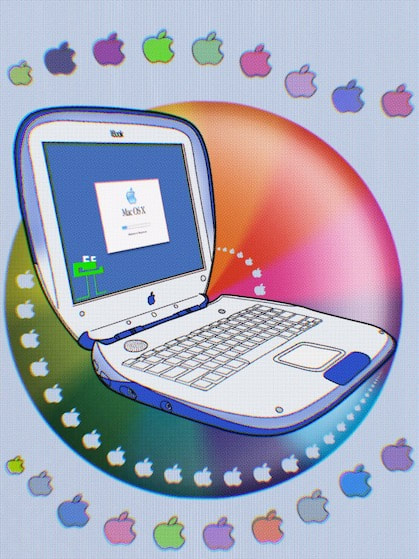
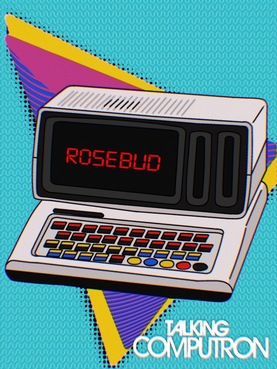
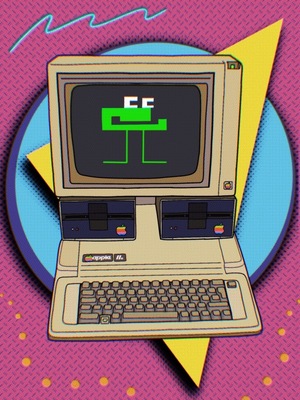
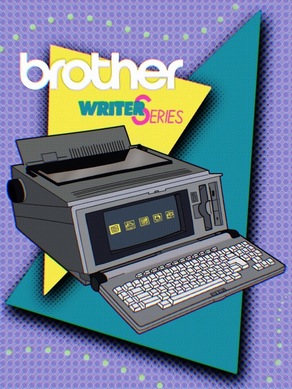

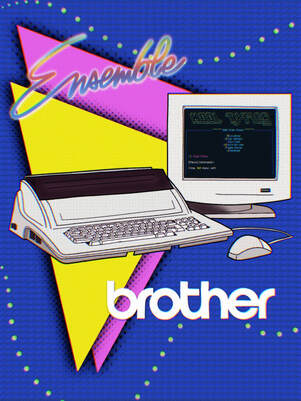
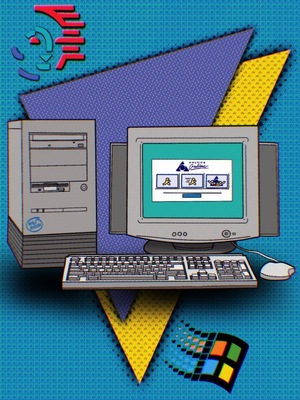
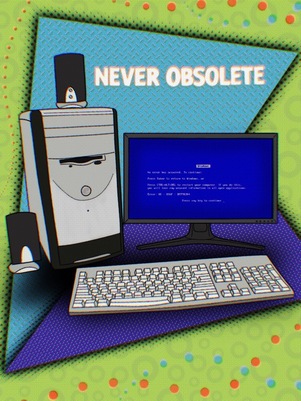
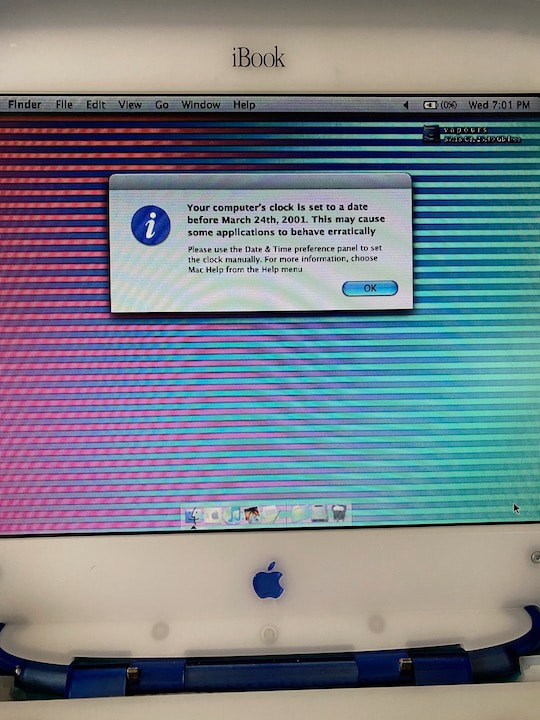
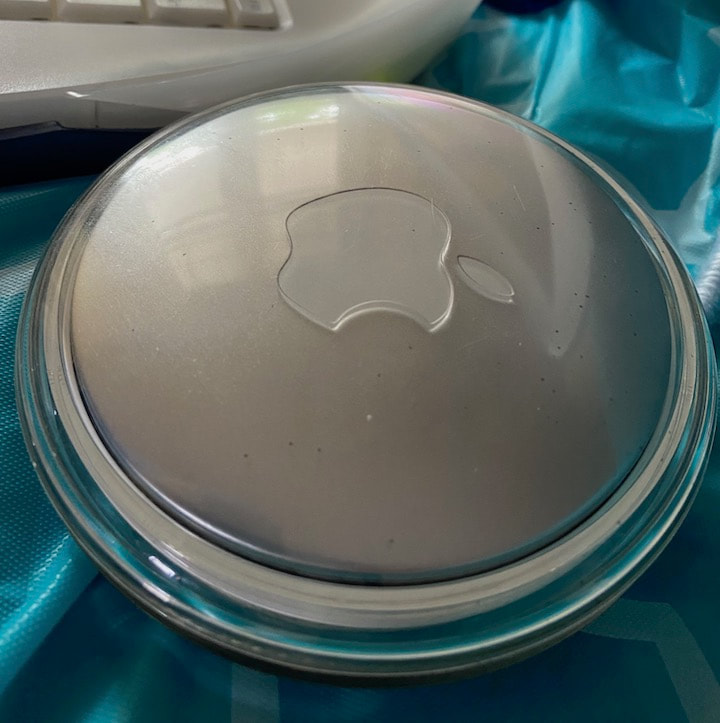
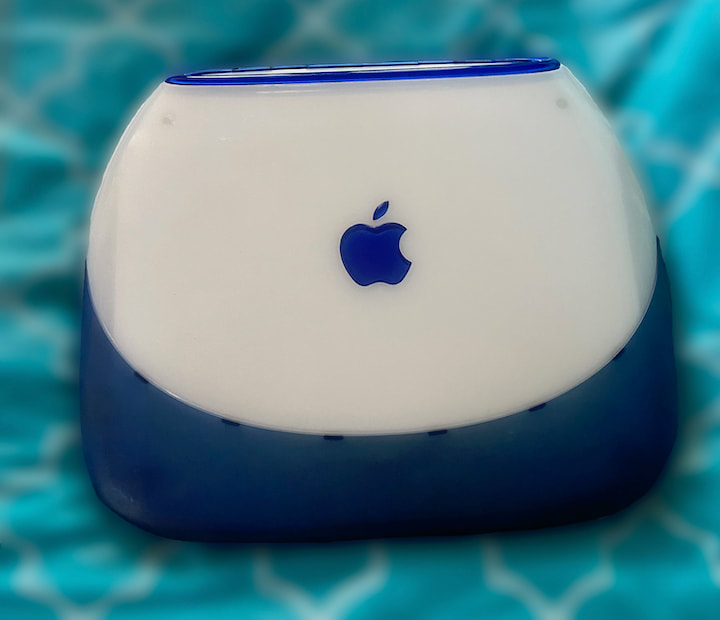
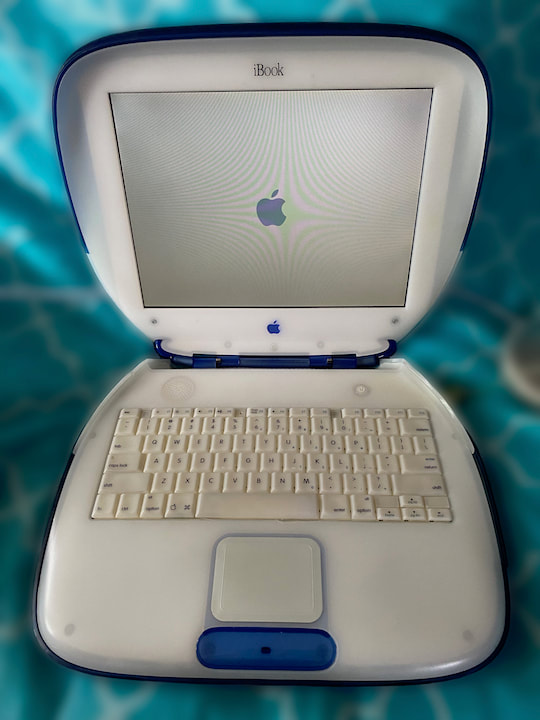
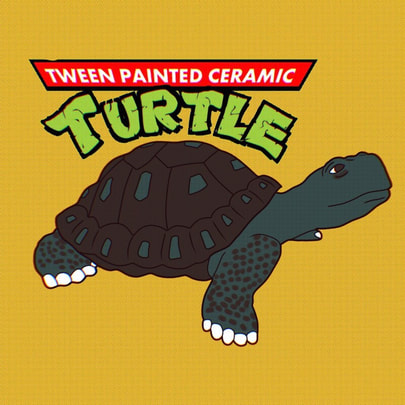
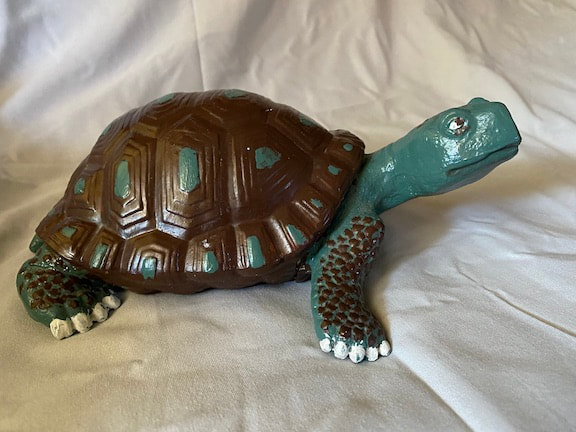
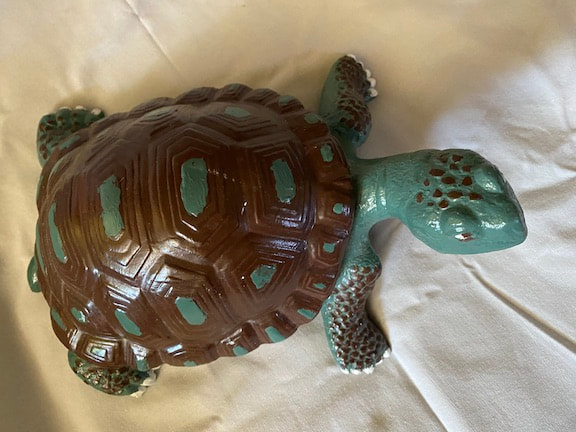
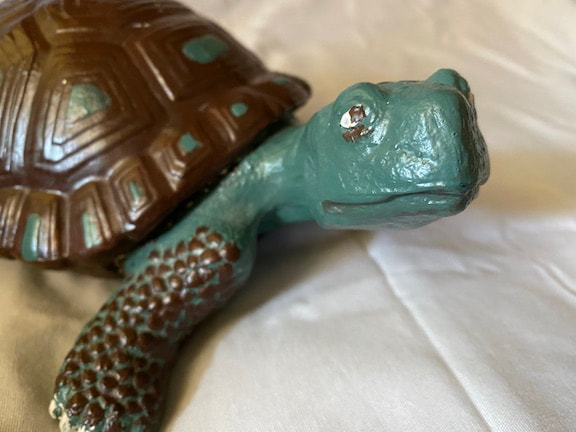
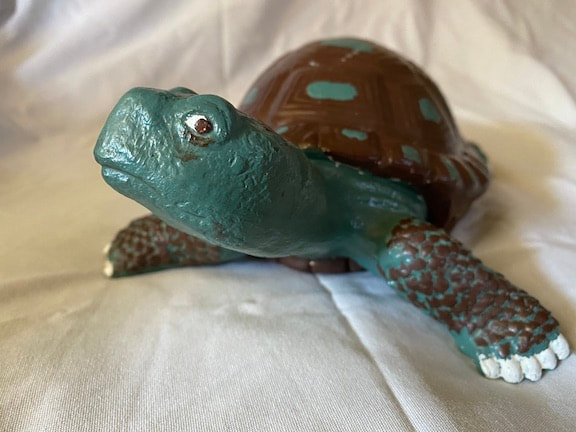
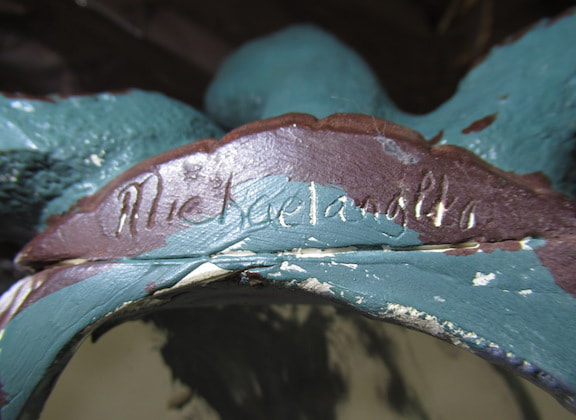
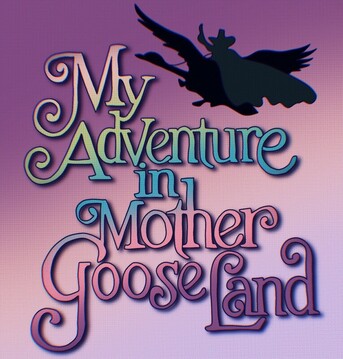
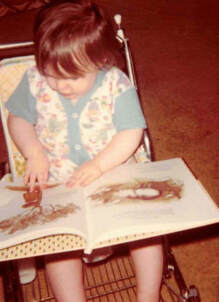
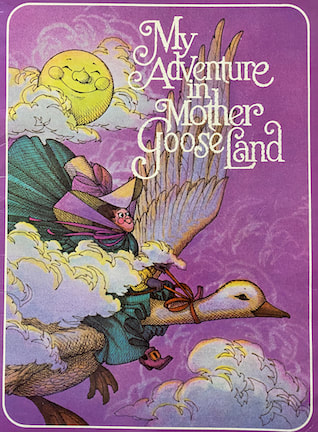
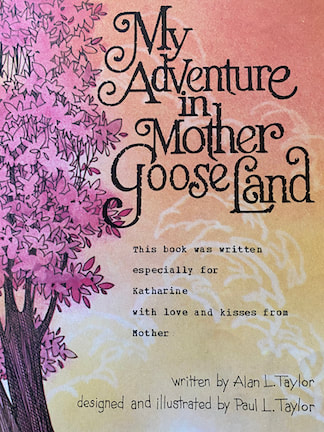
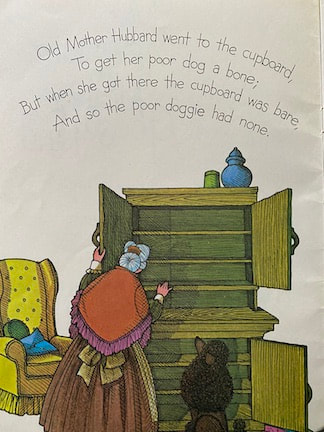
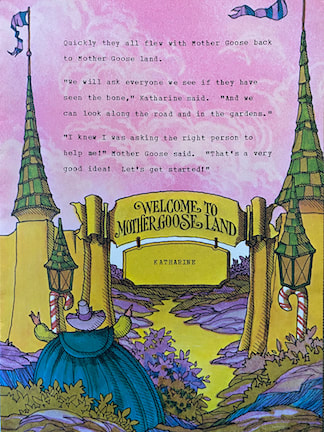
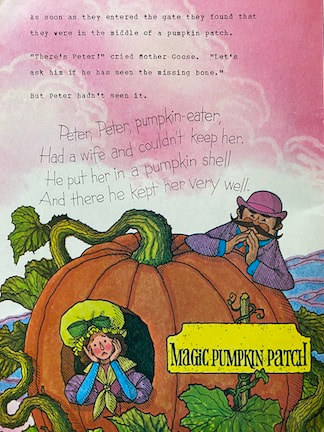
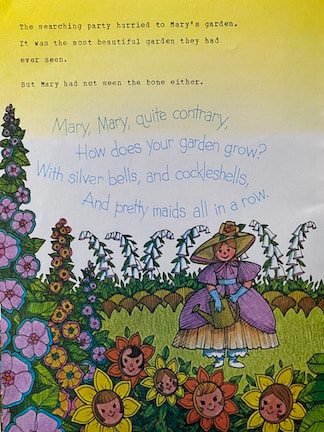
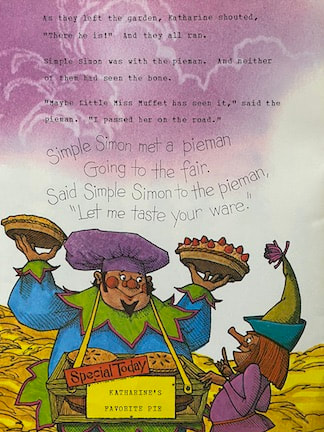
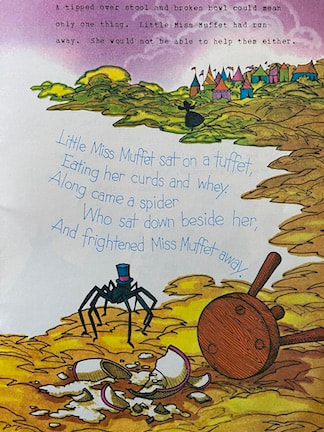
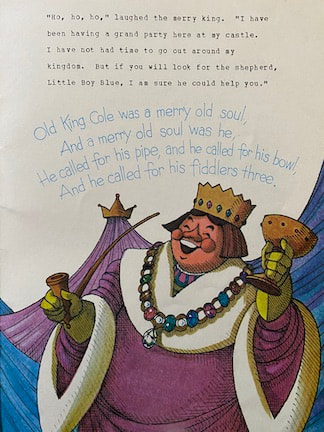
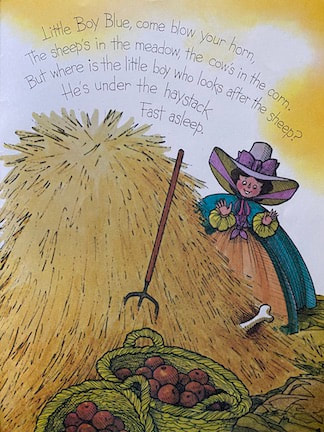
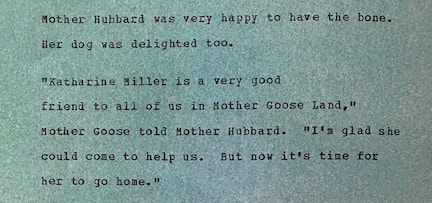

 RSS Feed
RSS Feed
